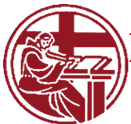 During the years of comparative tranquillity, the Friary of Multyfarnham sheltered under its roof for a period of time, one Brother Michael O’Clery OFM, who collected materials for the great repository of Irish history – the Annals of the Four Masters.
During the years of comparative tranquillity, the Friary of Multyfarnham sheltered under its roof for a period of time, one Brother Michael O’Clery OFM, who collected materials for the great repository of Irish history – the Annals of the Four Masters.
This historical masterpiece brought unfading honour to the Franciscan Province of Ireland and earned the ever-lasting gratitude of all students of Irish history. In the year 1629, during his toilsome travels over Ireland, he made his way from the recently established friary at Killinure Athlone on the shores of Loch Ree, to Multyfarnham Friary. He was aware that he would find there an ancient and celebrated volume, a precious treasury of Irish historical lore.
This volume Brother Michael describes simply as the “Book of Cu Connacht O’Daly.” A second copy of this book was made in 1635 from the transcription done by Michael O’Clery at Multyfarnham Friary in 1629.
“The Book of Cu Connacht O’Daly’s” compiler was probably the same person who is described by the Four Masters as a chief bard or historian, and a native or resident of Lackan in Westmeath. He died, according to the authorities, at Clonard in Meath in A.D. 1139, “probably on pilgrimage or in pious retirement.”
Lacken is close to Multyfarnham, and it was natural that the book compiled by its great bard, should be preserved in the neighbouring Franciscan Friary.
This valuable manuscript was five hundred years old when Brother Michael took it into his hands and with silent, reverent delight, set himself to copy its bloody story. One can imagine him sitting close to a table in the Friary and turning, day by day, the mellow leaves, as letter by letter, his eye scanned the faded script, and his pen traced the words anew onto a clean page.
Brother Michael was interested in but one document in O’Daly’s book, viz. the “Cogad Gáedel Re Gallaib” or, “The War of the Gaedhil with the Gaill.” This work describes the invasions of Ireland by the Norsemen, “the powerful azure Gentiles,” and by the Danes, the “fierce hard-hearted Danars,” and covers the years from the time of Airtri (died 802) son of Cathal, to the final Irish victory at Clontarf.
It is a long work, “and its transcription must have occupied the greater part of a month.” The last word transcribed, Brother Michael closed the priceless vellum, and resumed his travels. And well it was that the learned scribe had copied the book, for in the turmoil of subsequent years, the original volume completely disappeared and thus, it is to the labours of Brother Michael at Multyfarnham Friary that we are indebted for a copy of “Cu Connacht O’Daly’s Cogad Gáedel Re Gallaib.”
In the year following Brother Michael’s visit to Multyfarnham Friary, a letter signed by Falkland, Viceroy, Adam Loftus, Lord Chancellor, James Ussher, Protestant Archbishop of Armagh, and others, was responsible for an “active outbreak of persecution (1629-1630), when all the houses of the regulars were suppressed.” Fortunately, the wave of persecution soon subsided, and the Catholic Church once again enjoyed comparative peace.
Fr James Plunket, a priest of the diocese of Meath, writing in 1636, makes it clear that the work of the friars was not confined to preaching and catechising. He states explicitly that for some years promising young men of the nobility were received into the friary of Multyfarnham, as well as into the friaries of Dublin and Drogheda, and were educated along sound religious lines.
The results justified the practice, for Fr Plunket adds that the “exemplary lives of these young men, and their excellent dispositions, together with the likelihood of a sufficient number of others like them in future years, pleased all devout Catholics, and filled them with the hope of a new flowering of Catholic life in Ireland.” From the tenor of Fr Plunket’s observation, it is clear that this training was given to young men who intended to follow a secular career.
In the decade and a half preceding 1641, Multyfarnham Friary was a centre of vigorous Franciscan activity. The friary church and conventual buildings had been repaired and renovated. The community was actively engaged in pastoral and educational work. Ireland was, to all appearances, shaking off the shackles of religious and political tyranny. The future looked bright with the promise of happier days.
